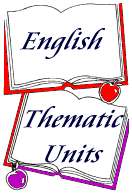![]()
|

All the Tests
- Adjectives
- Adverbs
- Conjunctions
- Determiners (none found yet)
- Interrogatives
- Morpheme, Characteristics of
- Morphological Analysis, Steps of
- Nouns
- Prepositions
- Pronouns
- Qualifiers
- Relatives
- Verbs
- Has a meaning that can be at least vaguely stated
- Contains only one unit of meaning
- Can be used with the same meaning within other words or as a word itself
Steps of Morphological Analysis
- Draw a vertical line between words and between whatever parts of words seem to you to be meaningful units in the sentence.
- Go back and check each division you made.
- Be sure that each contains only one unit of meaning.
- Try to state what the meaning or function of each unit is.
- Try to think of a way that you can use the unit with a similar meaning in another word or as a word itself.
Formal Proof
- Has noun-making morpheme. (government)
- Can occur with the plural morpheme. (governments)
- Can occur with the possessive morpheme. (government’s decision)
- Without modifiers, can directly follow an article and create a grammatical unit. (the government, a government)
- Can fit in the frame sentence. ((The) ________ seem(s) all right.)
Formal Proof
- Has verb-making morpheme. (criticize)
- Can occur with present-tense morpheme. (criticizes)
- Can occur with past-tense morpheme. (criticized)
- Can occur with present-participle morpheme. (criticizing)
- Can occur with past-participle morpheme. (had fallen, was criticized)
Functional Proof
- Can be made into a command. (Criticize this novel!)
- Can be made negative. (They did not criticize the novel.)
- Can fit in one of the frame sentences. (They must ________ (it.) or They must _____ good.)
Formal Proof
- Has adjective-making morpheme. (happy, lovable, foolish)
- Takes comparative or superlative morpheme. (softer, softest)
Functional Proof
- Can be compared by using more or most. (more sensitive)
- Intensifies. (very soft)
- Can fit both slots in the frame sentence. (The ______ man seems very ___.)
Formal Proof
- Can be compared by using inflectional morphemes or more and most. (She ran faster.)
- Takes comparative or superlative morpheme. (softer, softest)
Functional Proof
- Can be compared with more or most. (more suddenly)
- Intensifies. (very suddenly)
- Can be moved within a sentence. (The door opened suddenly. The door suddenly opened., Suddenly the door opened.)
- Can fit in the frame sentence. (The man told his story ____________.)
- Try the pronouns one at a time,
alone.
For example, when deciding between For Carla and I and For Carla and me, omit Carla and. Usually you will be able to tell at once that For me is correct and For I is not. - Substitute other pronouns for the
entire phase.
For example, when deciding between Just between you and I and Just between you and me, substitute we and us for you and I or you and me. You may have a clearer intuition that Just between us (the equivalent of you and me) is correct, but Just between we (the equivalent of you and I) is not.
None found at this time.
- Can fit in the frame sentence (most cases).
The handsome man seems __________________ handsome.
very
quite
rather
etc.
- Remove the prepositional phrase. If the sentence makes sense without it, it is a prepositional phrase.
- To determine if it’s a preposition or an adverb or verb particle, search for the object. If three is no object, it is either an adverb or verb particle.
If it has a noun phrase after it, it is a preposition and not a subordinating conjunction.
Sometimes the grammatical function of the interrogative word is clearer if you answer the question, substituting an appropriate word for the interrogative.
When are you leaving? (Question)
You are leaving then. (Answer)
Relatives have antecedents (a preceding noun to which they refer); if you find no antecedent, the word may be functioning as something other than a relative.
The pilot who flew us through the thunderstorm. (the pilot is the antecedent and who is the relative)


|
A.Word.A.Day: |


